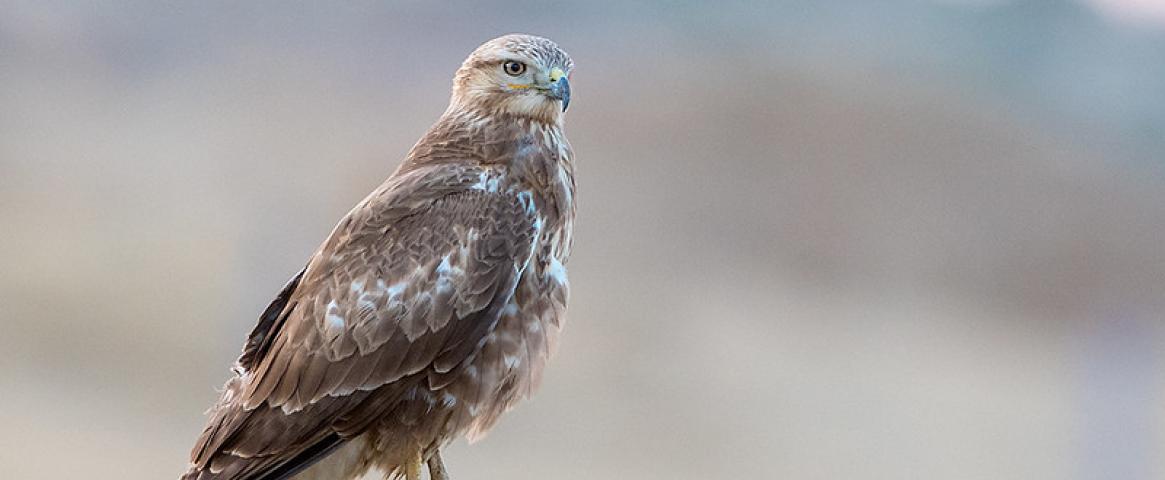By Katrina Rossos
As spring arrives in the Northern Hemisphere, thousands of birds pepper the sky, traveling north to mate, but Israeli and U.S. scientists recently discovered for the first time a bird that does the opposite. They found that the long-legged buzzard migrates south to nest and then journeys north.
This discovery “doesn’t suit the common breeding knowledge that everybody knows,” says lead author and ecologist Guilad Friedemann. He says he was astonished by this finding not only because it counters the conventional wisdom of seasonal bird migration, but also because this particular population wasn’t known to travel.
Over the span of a single year, migratory birds lead dual lives, split between their breeding season, where they nest in one food-rich region, and their off-breeding season, where they seek out the next reliable meal in other parts of the world. This study, recently published in the Journal of Avian Biology, presents the first-documented bird population north of the equator that travels south to lay eggs and then migrates north during its off-breeding season.

Migration patterns like this one, which do not follow traditional seasonal routes, are exceptionally rare. In spring, almost all migratory birds above the equator travel north to breed. They follow this timeline to take advantage of the surge in new plant and animal life to sustain themselves during the taxing experience of becoming new parents. Come fall, they depart south to spend winters where warmer temperatures keep the landscape greener and their bellies full.
Despite the long-legged buzzards’ backwards trek, Friedemann and his colleagues found that the birds are traveling to areas that offer them the most to eat at that particular time. This finding confirms the understanding that birds relocate to places flush with their food, no matter the direction on the map.
“This exception kind of proves the rule that the underlying cause or driver of migration is animals tracking resources,” says ornithologist T. Scott Sillett, head of the Smithsonian Migratory Bird Center, who was not involved in the study. “This study really shows a remarkable case of how a species is doing something different,” but following the same motivation as other migrators. In the long-legged buzzard’s case, it just happens to be tracking a meal that strays from the traditional pattern we might be used to, he adds.
Common in the Eastern Mediterranean and Europe, the long-legged buzzard — what North and South Americans consider a “hawk” — hunts in open grasslands, plucking small rodents and lizards out of low underbrush.
The largest nesting population of long-legged buzzards, found in the Judean foothills, were thought to live in Israel year-round. Friedemann, a doctoral student at Tel Aviv University, unexpectedly discovered that this population actually migrates each year. By tagging the hawks with solar-powered GPS transmitters, he confirmed that they travel north to Syria, Russia, and Turkey in late June and return to Israel in late November.
Uncovering why these birds might make this backwards migration came after comparing satellite images of plant cover at both the long-legged buzzards’ northern and southern ranges. This approach allowed the research team to gauge where the birds’ dinner may be hiding at different times in the year. Sure enough, Israel’s greenery in the spring — hawk breeding season — was comparable to the levels found at the birds’ northern homes through the fall. Friedemann concluded that the birds were leaving Israel when populations of their prey were decreasing in early summer and, subsequently, increasing at their northern range.
“It’s easy to think that all migratory species do the same thing,” Sillett says. “And in reality, a lot of species are more flexible perhaps than we think they are, and this particular species of hawk, this long-legged buzzard, shows that there’s flexibility among species.”
Katrina Rossos is a Florida-based science writer who specializes in communicating about ecology, conservation, natural resources, and wildlife. She graduated Tulane University with a B.A. in English and film studies and a concentration in biology, and she is currently pursuing a master’s degree in wildlife ecology and conservation at University of Florida. A previous editor for AOL, her work has been published in many online and print publications, including U.S. News & World Report, Backpacker Magazine, Pharmacy Times, and The Dodo. Check out her work at katrinarossos.com and contact her at katrina.rossos@gmail.com.
This story was produced as part of NASW's David Perlman Summer Mentoring Program, which was launched in 2020 by our Education Committee. Rossos was mentored by Ashley Braun.






